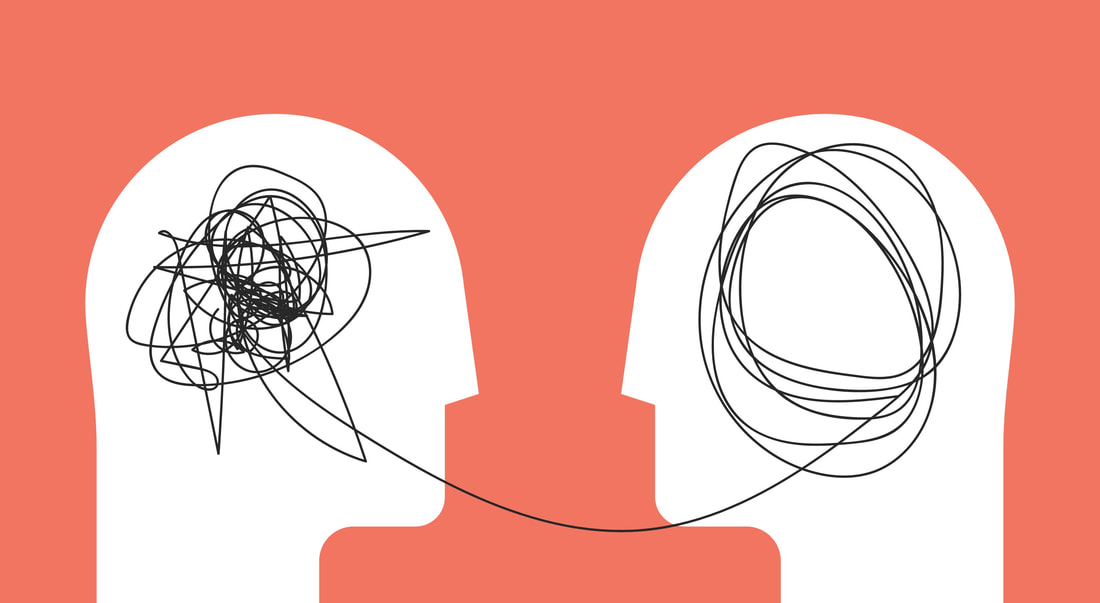 What is a behavior? We hear the term behavior used all of the time in the disability community, but what does that truly mean? We break down the meaning of behavior and how that fits within the common therapeutic models, like Applied Behavioral Analysis, that you see often when you get started in learning about behavioral intervention. A behavior is defined as an action or skill needed to interact with the environment. Think about any action or skill that you may need to communicate with the world around you — that is a behavior! The term behavior is often used with a negative connotation, but removing that association can be helpful as you are working through the process of defining what behavior means. A few examples of behaviors are:
The list goes on! Any action we engage in can be defined as a behavior. All behaviors typically have an appropriate environment in which they are preferred to occur. For example, speaking at a high volume is totally okay at a sports arena, but less preferred in a classroom or group setting. When assessing behaviors, we start with reviewing if they are occurring in a way that is more or less preferred. Less preferred behaviors occurring in an inappropriate environment usually lead to individuals and families to seek support in learning how to adapt and cope with those behaviors. Are behaviors positive or negative? There are not many truly negative behaviors, but simply less preferred behaviors occurring in an inappropriate environment. When thinking of behaviors that typically interfere with an individual’s ability to function in their environment, we often think of physical aggression like hitting or destroying property or verbal aggression like yelling or making hurtful comments. When framing these behaviors in an inappropriate environment, individuals may be limited in their ability to access that environment successfully as it can cause a risk to themselves or others. Through the basis of behavioral intervention, we break down the behaviors an individual is experiencing, if the behavior is occurring in an appropriate or inappropriate environment, and what the behavior is seeking to communicate or access. For example, punching a pillow in your room when you are feeling frustrated is a less preferred behavior occurring in an appropriate environment. The risk of harm to yourself or others is low and you are working through an expression of an emotion that you may not be able to explain. If you were to take the behavior of punching and place it in an inappropriate environment, say in the classroom or group setting, you are now facing a behavior that is inappropriate for the setting as it can lead to harm to yourself or others. Once we identify the behaviors, it is all about discovering what the behavior is trying to communicate as well as what the desired outcome of the behavior is so we can work on replacing it with appropriate behaviors for the given environment. What causes and reinforces behaviors? Behaviors are a form of communication in which an individual is typically attempting to gain some level of reinforcement. Reinforcement can be access to a preferred item and activity or social interaction and attention. Remember that there are rarely negative behaviors. Oftentimes the individuals we serve engage in a behavior as it is an effective way for them to meet their needs as they are unable to do otherwise. Imagine being unable to verbally communicate if you were feeling sad, mad, or hurt. You would adapt your behavior to find a way to express yourself to get the help you needed and sometimes that leads to big expressions of emotion that may be commonly referred to as negative or challenging behaviors. Our goal in behavioral intervention is to reestablish the reinforcements of behavior to support more preferred behaviors in the appropriate environment to occur more frequently. How does this fit within the context of behavior intervention? Behavioral intervention serves to develop a stopgap to challenging behaviors occurring in inappropriate environments by building the individual’s toolbox of coping skills and alternative behaviors to meet their needs instead of accessing the challenging behavior. Increasing the use of coping skills and more preferred behaviors in place of less preferred behaviors typically allow for individuals to have more successful interactions with those around them and their communities. This process takes time and there is no immediate solution to decreasing challenging behaviors, however consistency in positive reinforcement is a powerful tool that we harness as clinicians to support the individuals we serve in adapting their behavior in a way that serves them more successfully. Learn more about Behavior Services and where we can help.
0 Comments
Leave a Reply. |
Categories
All
Archives
July 2024
|
We Provide Services 24/7
Administrative Office Hours:
Monday - Friday
8:00 am - 5:00 pm
Phone: 720.684.6102
[email protected]
Fax: 303.261.8216
Mailing Address:
606 Mountain View Ave.
Longmont, CO 80501
Click to set custom HTML
© 2023 All RIGHTS RESERVED PRIVACY POLICY

 RSS Feed
RSS Feed